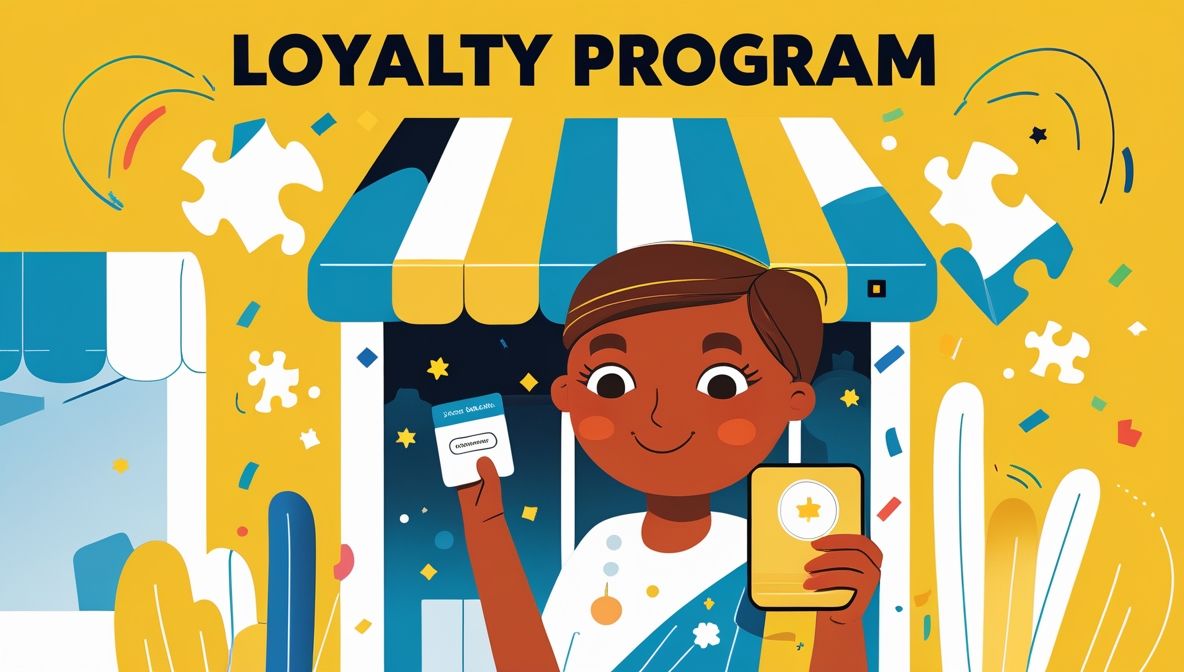Keeping customers engaged and coming back is the backbone of long-term business success. A well-designed loyalty program rewards repeat purchases, strengthens brand connections, and increases customer lifetime value. The key is to offer real benefits that matter to your audience while ensuring the program is easy to understand and use.
1. Define Clear Goals
Before setting up a program, determine what success looks like. Are you looking to increase purchase frequency, boost average order value, or encourage referrals? Setting clear objectives will shape how the program is structured and measured.
Consider These Common Goals:
- Increase customer retention – Encourage repeat purchases by offering rewards.
- Improve brand engagement – Foster stronger relationships through exclusive experiences.
- Boost customer spend – Incentivize larger purchases with tiered rewards.
- Generate referrals – Reward customers for bringing in new buyers.
2. Understand Your Audience
A loyalty program only works if it aligns with customer behavior and preferences. Analyze purchase history, survey existing customers, and track engagement to determine what motivates them.
Key Questions to Ask:
- What types of rewards are most appealing?
- How often do customers make repeat purchases?
- What influences their buying decisions?
- Would they prefer discounts, freebies, or exclusive perks?
3. Choose the Right Structure
There are several ways to reward customers. The right choice depends on your industry, customer expectations, and overall business model.
Popular Loyalty Program Models:
- Points-Based – Customers earn points for purchases and redeem them for rewards. (Example: Starbucks Rewards)
- Tiered System – Higher spending unlocks better rewards. (Example: Sephora’s Beauty Insider)
- Cashback or Store Credit – A percentage of each purchase is credited for future use. (Example: Amazon Prime Rewards)
- Paid Memberships – Customers pay a fee to access exclusive perks. (Example: Costco)
- Referral-Based – Existing customers earn rewards for bringing in new ones. (Example: Tesla’s referral program)
4. Offer Meaningful Rewards
Generic discounts won’t always drive engagement. Customers should feel they’re getting real value. The best rewards are desirable, attainable, and encourage repeat business.
Reward Ideas That Work:
- Exclusive discounts – Percentage off future purchases.
- Early access – Priority on new products or sales.
- Personalized gifts – Birthday rewards or tailored offers.
- Free products – Complimentary items based on past purchases.
- Experiential perks – VIP events, workshops, or travel benefits.
5. Keep It Simple
If customers struggle to understand how to earn or redeem rewards, they won’t participate. The program should have clear rules, straightforward earning methods, and an easy redemption process.
Ways to Simplify:
- Make sign-ups effortless (email, phone number, or app-based).
- Keep reward calculations transparent.
- Allow digital tracking through an app or website.
- Avoid complicated restrictions that frustrate users.
6. Integrate Across Channels
A loyalty program should function seamlessly whether customers shop in-store, online, or via mobile apps. Omnichannel integration makes it easier to engage with the program wherever they choose to shop.
Key Integrations to Consider:
- POS systems for instant in-store rewards.
- E-commerce platforms for online tracking and redemptions.
- Mobile apps for push notifications and exclusive offers.
- Social media tie-ins for engagement-based incentives.
7. Promote the Program Effectively
A loyalty program only works if customers know about it. Regular communication ensures participation remains high.
Promotion Strategies:
- Website & Checkout – Promote at key touchpoints.
- Email & SMS – Send reminders, personalized offers, and updates.
- Social Media – Highlight real customer success stories.
- Packaging Inserts – Include QR codes or referral bonuses.
- Staff Training – Educate employees on explaining benefits.
8. Personalize the Experience
Loyalty programs should feel exclusive. Personalization keeps customers engaged by making them feel valued.
Ways to Personalize:
- Offer tailored recommendations based on purchase history.
- Send birthday or anniversary rewards.
- Recognize milestones (e.g., “You’ve been with us for a year!”).
- Provide early access to sales based on loyalty status.
9. Monitor Performance and Adapt
A successful program requires ongoing adjustments. Track key metrics to determine what’s working and where improvements are needed.
Metrics to Track:
- Enrollment Rate – How many customers sign up?
- Redemption Rate – Are rewards being used?
- Repeat Purchase Frequency – Are customers returning more often?
- Average Order Value – Is spending increasing?
- Customer Satisfaction – Do participants find value in the program?
10. Keep Customers Engaged Over Time
A loyalty program isn’t set-and-forget. Keeping it fresh prevents stagnation and keeps customers excited.
Engagement Tactics:
- Run limited-time promotions for double points.
- Introduce surprise rewards to keep interest high.
- Encourage social sharing with referral incentives.
- Gamify the experience with challenges or seasonal events.
Final Thoughts
A well-crafted customer loyalty program creates long-term connections, increases revenue, and strengthens brand loyalty. The most effective programs align with customer expectations, offer real value, and stay adaptable to changing behaviors. By keeping the experience seamless and engaging, businesses can encourage repeat purchases and build lasting customer relationships.

No Responses